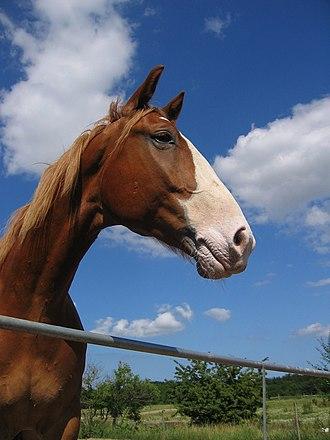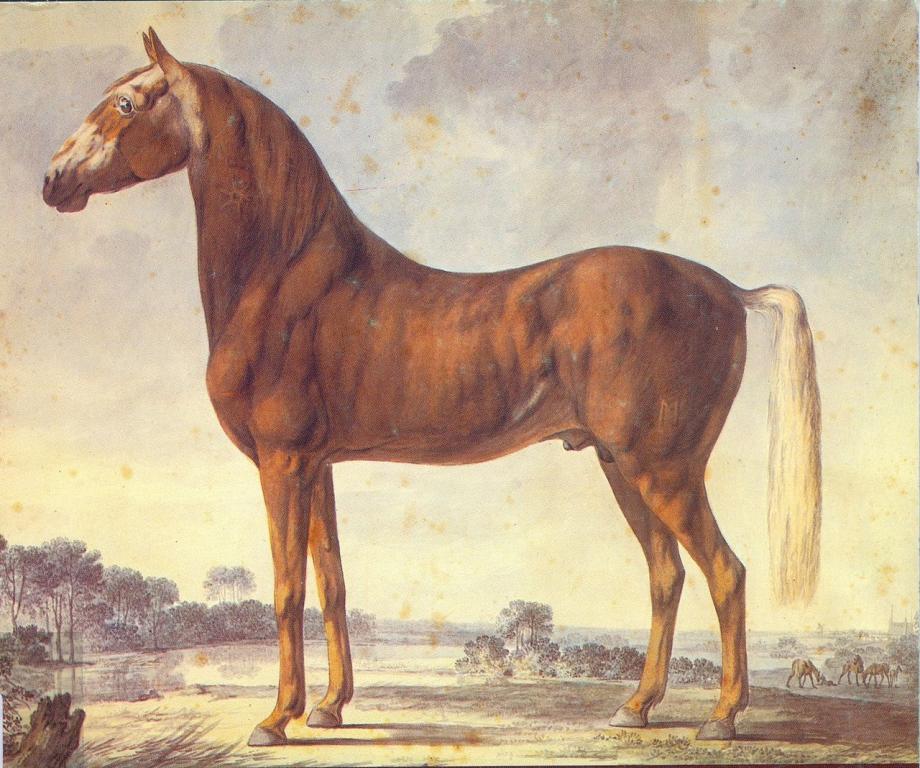
Continent: Europe
Country: Denmark
Weight: 500 – 600 kg
Height: 155 – 165 cm

The Frederiksborg horse originates from the Kingdom of Denmark, more precisely from the royal studs of Frederiksborg, founded in 1562 by King Frederick II in Hillerød. This prestigious breed was developed as a court and ceremonial horse, intended for royal carriages, parade driving, and classical high school riding.
Bred from Andalusian, Neapolitan, Friesian, and Oriental horses, the Frederiksborg played a foundational role in the creation of several European breeds, including the Lipizzan and the early Kladruber. Long regarded as a symbol of Danish royal prestige, the breed declined during the 19th century, but was revived in the 20th century by dedicated breeders.
The historical cradle of the Frederiksborg is located in northeastern Zealand, at Frederiksborg Castle in Hillerød, Denmark. While the royal studs ceased their operations in the 19th century, this region remains symbolically tied to the breed.
Today, Frederiksborg horses are mainly bred in various regions of Denmark, especially on Danish islands such as Zealand, Funen, and Lolland, within private breeding programs under the Frederiksborg Hesteavlsforeningen.
Smaller breeding efforts also exist in Germany, Sweden, Norway, and occasionally in North America, where dedicated enthusiasts contribute to preserving this baroque heritage breed.
The Frederiksborg holds significant historical genetic value, being one of the oldest European horse breeds with a closed studbook, with traceability dating back to the 16th century.
Originally selected for the Danish royal court, it was among the first standardized baroque horses, influencing many breeds across Europe. The Frederiksborg contributed notably to the development of the Lipizzan, Kladruber, the former Swedish court horse, and various ceremonial German breeds.
Its harmonious conformation, willing temperament, and aptitude for driving and classical dressage make it a valuable genetic reservoir for the preservation of baroque bloodlines.
Despite its limited population today, the Frederiksborg is preserved as a heritage breed, a living symbol of classical horsemanship and Danish royal genetics.
The Frederiksborg horse is one of the oldest European breeds with a studbook, with a history dating back to the second half of the 16th century. It is named after Frederiksborg Castle, located in Hillerød, north of Copenhagen, where King Frederick II of Denmark founded a royal stud farm in 1562 to breed ceremonial horses for the court.
The Frederiksborg was developed through carefully selected crosses between Andalusian, Neapolitan, Friesian, and Oriental horses, with the goal of creating an elegant, powerful, and trainable baroque horse, well-suited for royal carriages, classical dressage, and high school work.
During the 17th and 18th centuries, it enjoyed great fame across Europe, influencing the creation of many breeds such as the Lipizzan, Kladruber, and the former Swedish court horse. Widely exported to royal courts, it was praised for its harmonious conformation and willing disposition.
However, increasing inbreeding in the late 19th century led to a decline in quality, the closure of the royal stud, and the near extinction of the breed.
In the 1920s–1930s, Danish breeders revived the Frederiksborg from remaining bloodlines. Since then, the breed has been the subject of preservation programs, mainly managed by the Frederiksborg Hesteavlsforeningen, with a limited but monitored population.
Today, the Frederiksborg is recognized as a heritage baroque breed, a symbol of Denmark’s equestrian history, still used in traditional driving, classical dressage, and historical performances.
The Frederiksborg is known for its calm, reliable, and cooperative temperament. Bred over centuries for royal use, it was selected for its gentleness, tractability, and ability to work in harmony with humans, whether in harness or under saddle.
It is generally a level-headed horse, with emotional stability that makes it suitable for riders seeking a balanced, attentive, and willing partner. The breed is also known for its good memory, intelligence, and desire to please, making it enjoyable to train and well-suited to classical disciplines.
Its demeanor carries a certain natural pride, typical of baroque horses, yet it is neither difficult nor overly sensitive. It remains, overall, a respectful, patient, and adaptable horse, even in varied environments.
"Beneath its noble coat and royal gaits lies a gentle heart loyal, wise, and full of grace."
The Frederiksborg horse is currently classified among endangered breeds, due to its small population size and limited genetic diversity. However, it is attracting growing interest from passionate breeders, heritage conservationists, and admirers of baroque horses.
Thanks to the efforts of the Frederiksborg Hesteavlsforeningen and committed breeders in Denmark and across Europe, programs are underway to stabilize and strengthen bloodlines, while preserving the breed’s traditional features.
Current demand for elegant horses suitable for traditional driving, leisure dressage, and historical reenactments presents opportunities for revitalization. If conservation efforts continue, the Frederiksborg may reclaim a more visible place in classical disciplines and heritage circuits.
The Frederiksborg is a generally robust and resilient breed, historically selected for longevity and the ability to sustain steady work. It adapts well to temperate climates and the humid conditions of northern Europe.
However, due to centuries of genetic narrowing, the breed shows an increased vulnerability to inbreeding, requiring careful lineage management by breeders to prevent degeneration.
No major hereditary disorders are currently identified as specific to the breed, but monitoring of limb conformation, back health, and reproductive soundness is recommended, particularly for breeding stock.
Overall, the Frederiksborg maintains good general health when raised in proper conditions and monitored attentively.
The Frederiksborg is distinguished by an elevated, expansive, and cadenced trot, with strong engagement of the hindquarters and elegant lift of the forelegs. This gait, both powerful and supple, reflects its baroque heritage and its traditional selection for prestige driving and classical dressage.
Born on 12/04/2005
A symbolic driving horse of the Danish Royal Guard, known for participating in official ceremonies and formal presentations in Copenhagen. He embodies the elegance and tradition of the Frederiksborg breed.